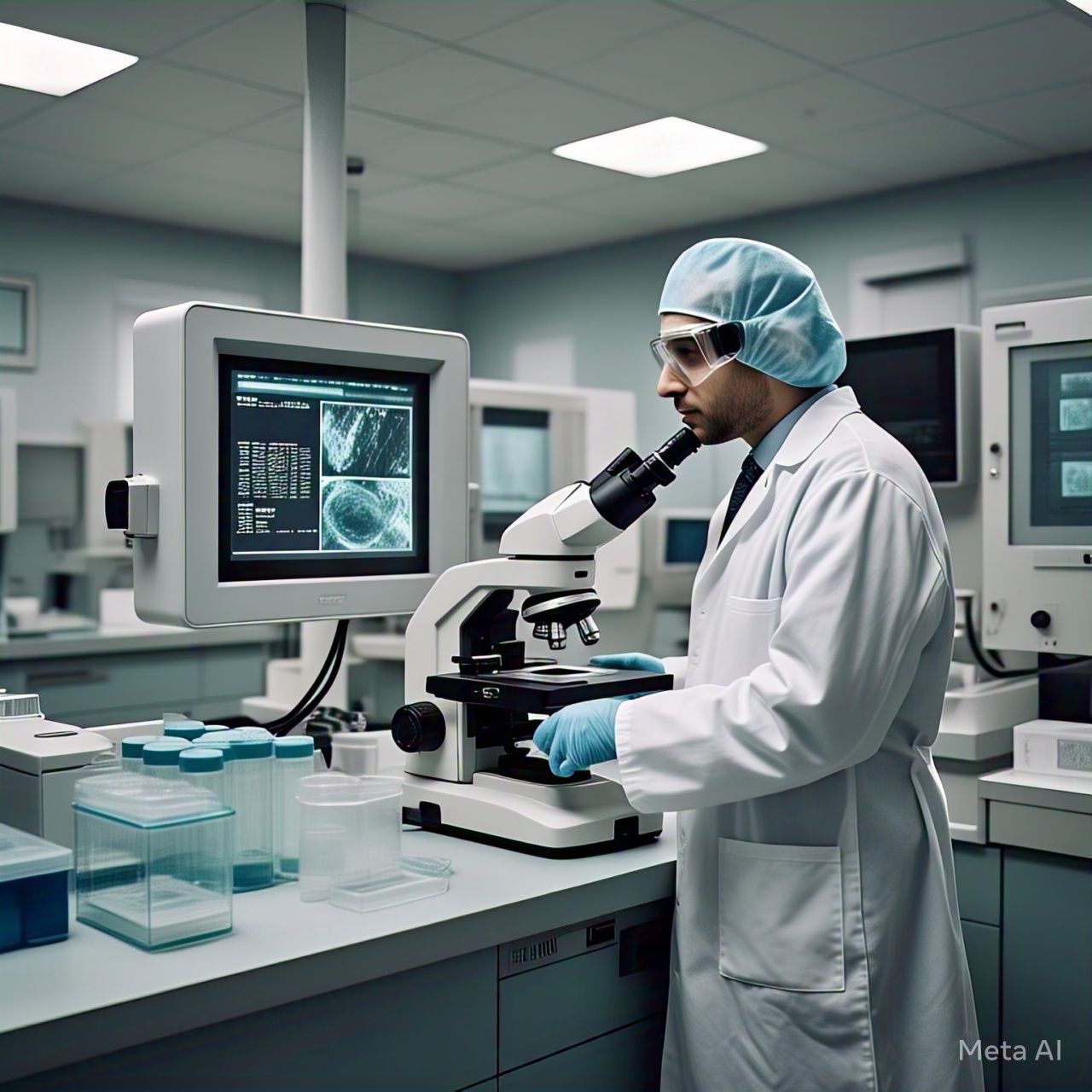Introduction
Artificial Intelligence (AI) is revolutionizing pathology by automating lab work and enhancing the accuracy of disease diagnosis. Pathologists play a critical role in identifying diseases through tissue and fluid analysis, and AI-powered tools are now assisting them by accelerating processes, reducing errors, and improving patient outcomes. With AI-driven automation, pathology labs are becoming more efficient, enabling faster and more precise medical decisions.
The Role of AI in Pathology
AI enhances pathology by automating image analysis, identifying abnormalities, and predicting disease progression. These advanced technologies reduce the workload on pathologists and improve diagnostic precision.
1. AI-Powered Digital Pathology
AI-driven image recognition tools analyze high-resolution digital slides to detect cancerous cells, infections, and other abnormalities. These systems enhance the efficiency of pathologists by identifying patterns that may be overlooked by the human eye.
2. Automated Tissue and Blood Sample Analysis
AI algorithms process tissue and blood samples faster than traditional methods, detecting diseases such as cancer, tuberculosis, and autoimmune disorders with high accuracy. This speeds up diagnostic workflows and ensures timely treatment.
3. Predicting Disease Progression and Treatment Response
Machine learning models analyze pathology data to predict how diseases will progress and how patients may respond to specific treatments. This enables personalized medicine and more targeted therapeutic strategies.
4. Enhancing Lab Efficiency and Reducing Human Error
AI-powered automation in pathology labs minimizes human errors, ensures consistency in test results, and improves overall lab efficiency. Robots and AI-driven machines handle repetitive tasks such as sample sorting and data entry, allowing pathologists to focus on complex cases.
Benefits of AI in Pathology
- Faster Diagnoses: AI speeds up the analysis of medical samples, leading to quicker treatment decisions.
- Improved Accuracy: AI reduces diagnostic errors and enhances precision in disease detection.
- Higher Lab Efficiency: Automation minimizes manual workload and streamlines pathology workflows.
- Better Patient Outcomes: Faster and more accurate diagnoses lead to improved treatment success rates.
Challenges and Ethical Considerations
Despite its advantages, AI in pathology faces challenges such as data privacy concerns, regulatory approvals, and the need for extensive training datasets. Ensuring AI-driven pathology systems are ethically designed and complement, rather than replace, human expertise is essential for responsible implementation.
The Future of AI in Pathology
As AI technology advances, pathology labs will see greater integration of AI-powered robotic systems, real-time diagnostics, and predictive analytics. AI will continue to refine disease detection, support pathologists in complex cases, and contribute to the evolution of precision medicine.
Conclusion
AI is transforming pathology by automating lab work and enhancing diagnostic accuracy. As AI-powered tools continue to evolve, pathology labs will become more efficient, leading to faster disease detection and better patient care. By embracing AI-driven pathology, healthcare providers can ensure more accurate, timely, and personalized medical treatment for patients worldwide.





